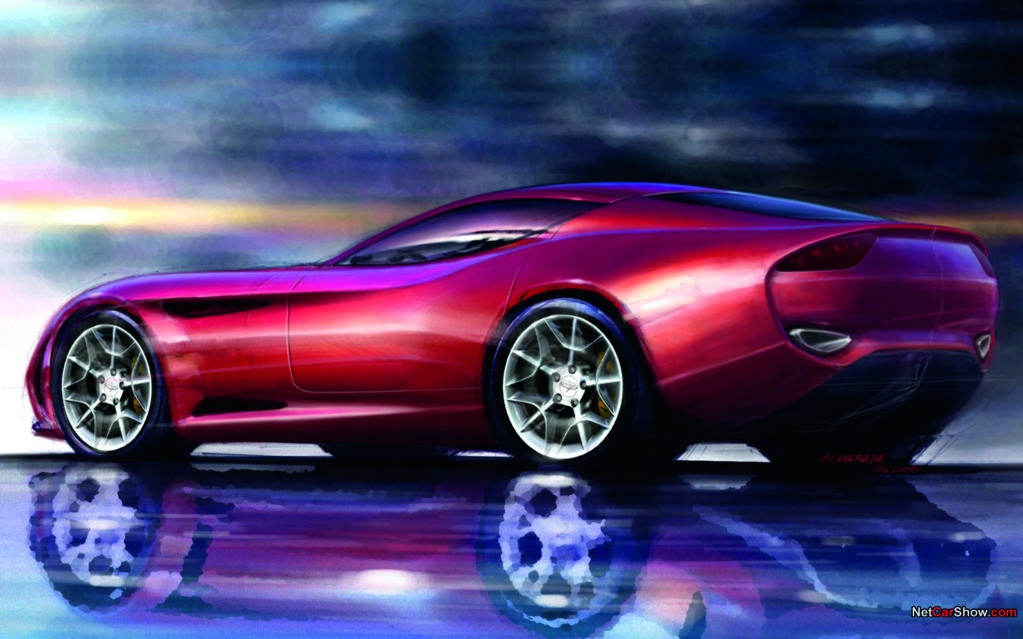A supercar has been defined as a vehicle that’s extremely fast or powerful and also commands a high price. The term first saw the light-of-day as part of an advert for the Bentley Speed Six on November 11, 1920, but only really caught on after being revived by British motoring journalist L.J.K Setright in the 1960s. He was writing a review on the Lamborghini Miura and claimed to have coined the phrase himself.
South African-built supercars have been few and far between. Traditionally, home-grown forays into this market have been limited to the making of headers, radiators, exhausts and chassis by Port Elizabeth-based Hi-Tech Automotive, on behalf of Noble, a British supercar manufacturer. These items would be shipped to the head office in Leicester England, to be fitted with engines and transmissions.
It’s no mean feat to have been selected by Noble for this auspicious task, considering that the M400—which made its debut in 2005—has been described by local salesman Neville Ritchie, as “the closest you’ll get to Formula One acceleration”. The extremely high tolerances that are required, along with Hi-Tech Automotive’s supreme craftsmanship, has seen them gain a prodigious reputation drawing delegates from Ferrari, who visited the plant to view their processes. In addition, Carroll Shelby—the originator of the Cobra—was so taken by the company’s quality workmanship, he demanded the replicas produced in the Port Elizabeth factory bore his name.
While South Africa is able to deliver world-class items, the moniker of “South African-made” was rarely attached to a vehicle deemed worthy of supercar status.
In 2009 however, all that changed with the advent of the Barnard. Housed in a secluded factory outside Bloemfontein, the South African-conceived, designed and built supercar can match the performance levels of the upper echelon of European performance vehicles. It boasts a top speed in excess of 300km/h, and sprints from standstill to 100km/h in less than four seconds. Providing the blueprint for the Barnard was the Porsche 962, and it is from this German marquis that the powerplant for the Barnard has been sourced. The twin-turbo V8 engine has undergone significant performance enhancing changes and delivers a staggering 460kW of power.
Despite these technological advances, the Barnard is still a purist’s car, in many respects, shunning the use of power steering, vacuum-assisted or ABS brakes, traction control as well as luxuries such as electric windows.
Borrowing from the advances made in Formula One, the Barnard’s shell is a monocoque chassis made from hi-tech steels such as Domex and Docol—both light and strong materials that can easily be shaped as the manufacturer wishes. The rear of the car is a sophisticated tubular steel cradle which houses the engine, gearbox and rear suspension. The Barnard’s front suspension is mated directly to the car’s rigid structure. Each vehicle is built according to the individual purchaser’s requirements—something one might expect considering these cars command a hefty price tag of approximately R1.1 million ($136,000).
The brainchild behind the eponymously-named vehicle is Chris Barnard. His deep roots in endurance racing were the driving force behind the production of a Le Mans-style race car. “This is a car which has been built with the objective of breaking barriers,” Barnard says. “No expense has been spared to make what I believe is the most single-minded performance machine yet from South Africa.”
More recently, a vehicle going by the name of the Perana Z-One, has come under the spotlight. The South African-built hypercar—assembled again at the Hi-Tech Automotive plant—has been limited to 999 units, and is a two-seater, Italian-designed vehicle that boasts 0-100km/h sprint times around the four second mark. Power is generated from a front/mid-mounted Chevrolet Corvette LS3 6.2-litre V8 engine that produces a whopping 328kW and 583Nm of torque. The Perana’s chassis is made from tubular and box-sectioned fibreglass and has seams so well machined it looks like the car was skinned in aluminium. The man responsible for this immaculate bodywork is chief stylist, Nori Harada.
Power is delivered to the rear wheels by the same six-speed transmission found in a Ford Shelby GT500 Mustang. Of course this hurtling rocket needs to be brought to a standstill and stopping power is provided courtesy of remarkable Brembo callipers. The vehicle’s shocks and springs are supplied by Bilstein and Eibach respectively.
The Perana marks the first collaboration between a Milanese coachbuilder and South African car manufacturer, Zagato, who have a 90-year long history in building fully-functional running concept cars. Amazingly, the car can be built in an unheard of four months’ time.
The Perana has a 50/50 weight distribution, which allows for a balanced and predictable drive. The steering has been described as sharp and gives the driver immediate and accurate feedback of the road conditions. The Perana is nimble and weighs in at an ascetic 1,195kg. Power is delivered to a six-speed manual gearbox with limited slip differential. The price for this sublime vehicle is around the R1 million mark ($124,000), but sadly the cars will be available only to the European market.
So what can we expect from local supercar manufacturers in the future? In recent years, South Africa has been one of the best performing motor vehicle markets globally. South Africa exports cars to some 70 countries internationally and represents all of the major car makers and eight of the top ten vehicle component companies. The Motor Industry Development Programme has helped boost exports and its successive programme, which will come into play in 2012, will reportedly result in more jobs and long-term sustainability for the industry. It seems the local motor vehicle industry is set to go from strength to strength. If the advent of these hypercars and the Joule—South Africa’s first, and much heralded, electric car—is anything to go by, locally-manufactured supercars might very soon be gracing a road near you.
